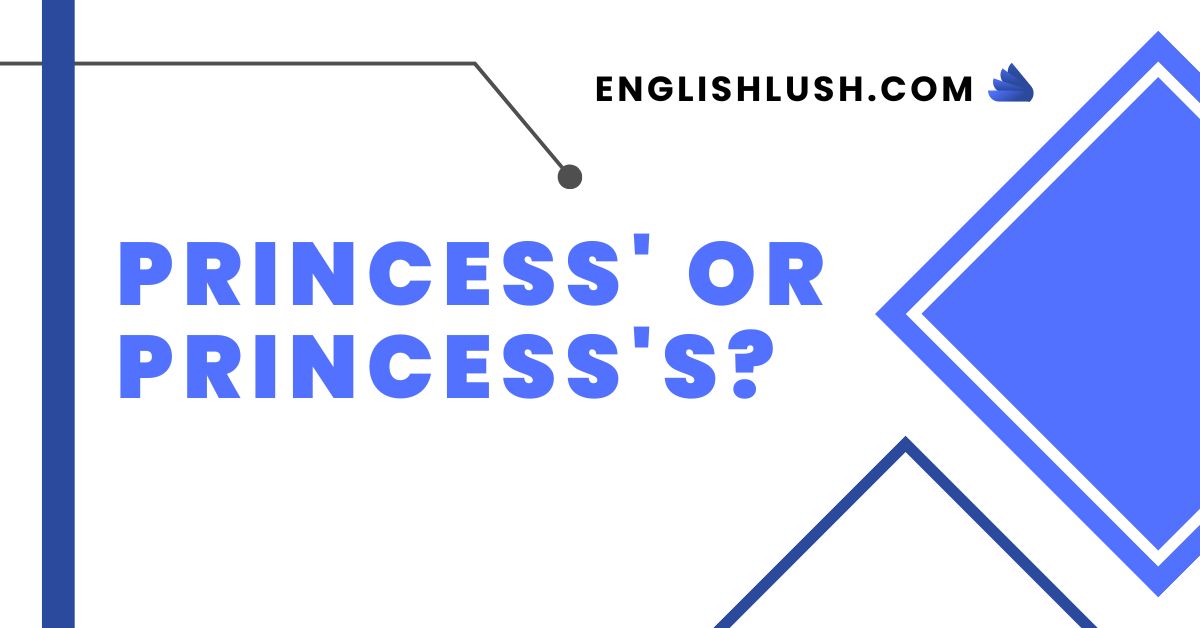The age-old debate over the proper way to form the possessive of a noun ending in “s” has puzzled writers and grammar enthusiasts for centuries. When it comes to forming the possessive of a word like “princess,” should one use the apostrophe alone (princess’), or should the apostrophe be followed by an additional “s” (princess’s)? This conundrum has sparked endless discussions and left many uncertain about the correct approach.
The Traditional Approach
Traditionally, the rule for forming the possessive of a singular noun ending in “s” has been to add an apostrophe followed by an “s.” This would result in a possessive like “the princess’s crown.” This approach, known as the “modern” or “traditional” possessive, is widely accepted and considered the standard in formal writing.
The rationale behind this tradition is that the additional “s” helps to maintain the distinct possessive form of the noun, making it clear that the possession is being attributed to the singular “princess” rather than a plural “princesses.” This can be particularly important in cases where the plural and possessive forms would otherwise be identical, such as “the princesses’ crowns” versus “the princess’s crown.”
Read This Blog: 12 Professional Ways to Say “Family Emergency”
The Simplified Approach
However, in more recent times, there has been a growing trend toward simplifying the possessive form by using the apostrophe alone, even for singular nouns ending in “s.” This “simplified” possessive, such as “the princess’ crown,” has gained traction, especially in less formal writing and speech.
The advocates of this approach argue that the additional “s” is unnecessary and can be seen as overly cumbersome, particularly in cases where the possessive is already clear from the context. They contend that the apostrophe alone is sufficient to convey the possessive meaning, and the added “s” may be perceived as redundant or even pedantic.
The Compromise Approach
In an attempt to find a middle ground, some writers and style guides have proposed a compromise approach. This involves using the traditional “princess’s” form for proper nouns (like the name “Princess”) and the simplified “princess'” form for common nouns (like the word “princess”).
The rationale behind this compromise is that proper nouns, being more distinct, benefit from the additional “s” to clearly differentiate the possessive form. On the other hand, common nouns, which are more generic, can often be adequately conveyed using the apostrophe alone, especially in cases where the possessive meaning is clear from the context.
Also Read This Blog: Agency’s or Agencies’ or Agencies?
Examples and Considerations
To illustrate the various approaches, let’s consider some examples:
The Traditional Approach
- “The princess’s crown was adorned with precious gems.”
- “The duchess’s palace was a marvel of architectural grandeur.”
- “The waitress’s kind smile made the customers feel welcome.”
The Simplified Approach
- “The princess’ crown was adorned with precious gems.”
- “The duchess’ palace was a marvel of architectural grandeur.”
- “The waitress’ kind smile made the customers feel welcome.”
The Compromise Approach
- “The Princess’s crown was adorned with precious gems.”
- “The duchess’ palace was a marvel of architectural grandeur.”
- “The waitress’ kind smile made the customers feel welcome.”
It’s important to note that the choice between these approaches may also depend on the specific style guide or publication’s preferences. Many renowned style guides, such as The Associated Press Stylebook and The Chicago Manual of Style, have their own guidelines for handling these possessive forms, which writers and editors should be aware of.
Moreover, the choice may also depend on the context and the intended audience. In formal, academic, or professional writing, the traditional “princess’s” form is generally considered the more appropriate and widely accepted choice. In more casual or conversational writing, the simplified “princess'” approach may be more commonly used and accepted.
Conclusion
The debate over “princess'” versus “princess’s” is a long-standing one, and there is no universally agreed-upon “correct” answer. Each approach has its merits and proponents, and the choice ultimately depends on the writer’s personal preference, the specific context, and the guidelines of the publication or style guide being followed.
Ultimately, the most important consideration is to maintain consistency within a particular piece of writing. Whether you choose the traditional, simplified, or compromise approach, the key is to stick to your chosen method throughout the text to ensure a cohesive and professional-looking result.
As with many aspects of the English language, the possessive form of nouns ending in “s” is a nuanced topic that allows for a certain degree of flexibility. By understanding the various approaches and their underlying rationales, writers can make informed decisions that best suit their writing style and the needs of their audience.

As a seasoned contributor to “EnglishLush”, Rosalie combines her linguistic prowess with a keen understanding of various topics, ensuring a delightful and informative reading experience. Her articles effortlessly blend clarity, creativity, and a touch of elegance, making language exploration an exciting journey for readers.










